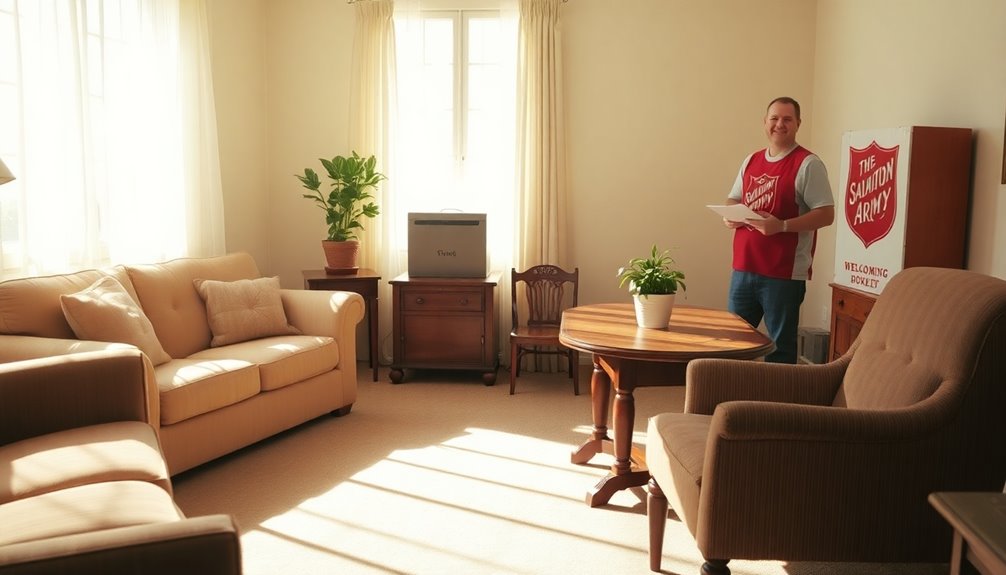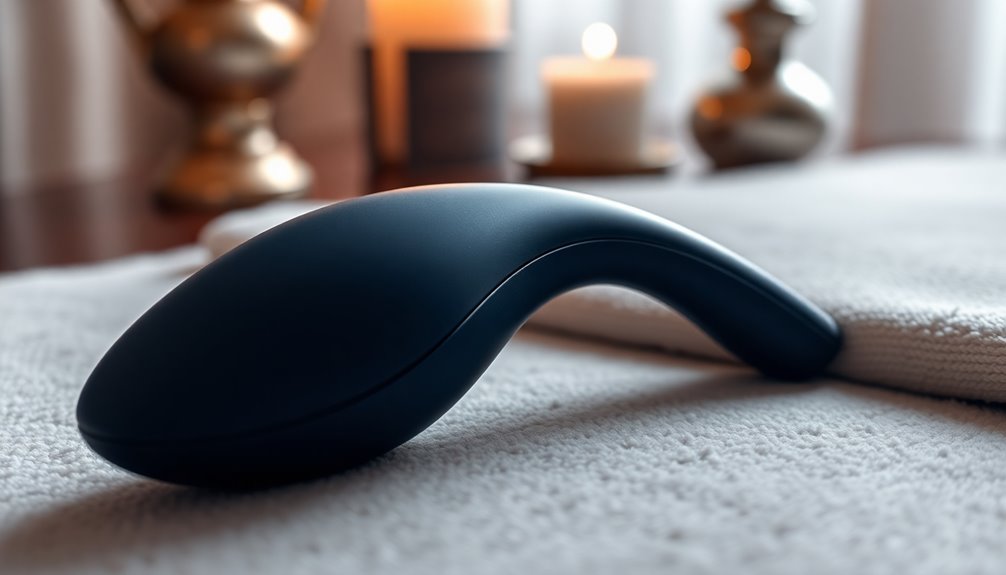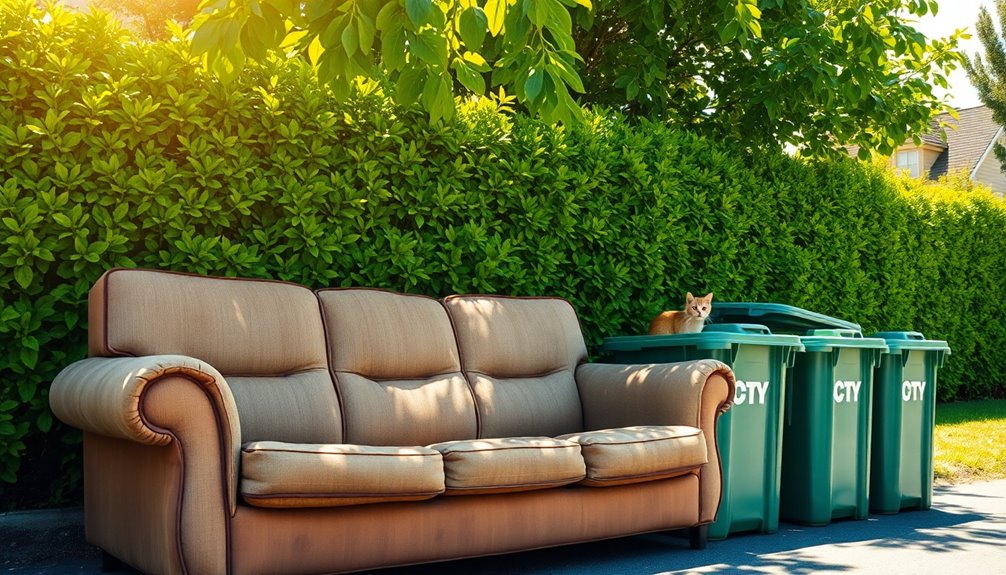Donating furniture to the Salvation Army is simple and rewarding. Start by checking that your items, like sofas and dressers, are in good condition and free from stains or odors. Clean and organize your furniture for easier handling, then contact your local branch to schedule a pickup or find a nearby drop-off location. Remember to label your items and keep a record for tax deductions; the Salvation Army can provide receipts. Your contributions support people in need, making a real difference in the community. There's more to explore about the benefits and processes of your charitable act ahead.
Key Takeaways
- Clean and inspect furniture items, ensuring they are functional and free of significant damage before donation.
- Research local Salvation Army locations for specific donation guidelines and pickup service availability.
- Schedule a pickup or find a nearby drop-off center using online resources for convenience.
- Label items clearly and keep a record of your donations for tax deduction purposes.
- Confirm receipt of your donation and request a donation receipt for tax documentation.
Eligible Furniture Items

When you're ready to donate furniture, it's crucial to know which items are eligible. You can make a significant impact by donating various pieces from your home. For bedroom essentials, consider donating dresser sets, wardrobes, bed frames, and nightstands. Just ensure the bed frames are in good condition.
In your dining and living areas, dining room sets, coffee tables, end tables, china cabinets, and sofas or armchairs can all be accepted, provided they're free of significant tears and stains.
For your home office or miscellaneous needs, office chairs, desks (excluding metal, school, and credenza types), bookshelves, playpens, and TV stands are often welcome. However, it's good to check local regulations, as some locations might not accept playpens. Additionally, donations help support various programs aimed at assisting those in need.
Keep in mind that all items must be functional and in good repair. Avoid donating anything with rips, broken parts, stains, odors, or pet hair. Also, steer clear of entertainment centers, TV armoires, built-in appliances, and anything containing hazardous materials. Always check local guidelines to ensure you're donating eligible furniture.
Condition Requirements

Understanding the condition requirements for donated furniture is key to ensuring your items are accepted. First and foremost, all furniture must be in good, usable condition. This means it should be free from dangerous chemicals, bed bugs, and significant tears. If you're donating appliances, make sure they're clean, fully functional, and include the necessary power cords.
Household items also need to meet specific standards; avoid donating items with severe pet stains, broken glass, or other damage that renders them unusable. Clothing should be free of missing buttons, broken zippers, or tears, ensuring it's wearable and clean. Additionally, donations to the Salvation Army support local community programs, so ensuring your items meet these standards is crucial for their effective use.
For specific items, like furniture with cushions, they must not contain hazardous materials or show significant damage. When it comes to electronics, ensure they're in working condition and not outdated. Sporting goods should have all parts intact, and toys and games need to be complete.
Donation Process Steps
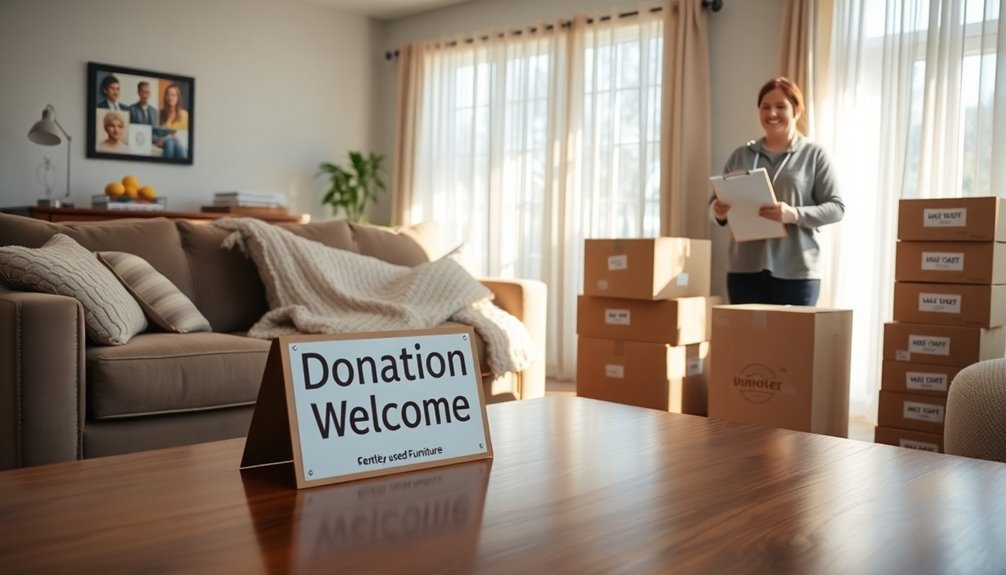
To donate your furniture, start by preparing your items and familiarizing yourself with the donation process. Begin by washing and inspecting each piece to ensure they’re clean and in good condition. Sort your items into categories for easier handling and package fragile ones securely to prevent breakage. Don’t forget to label everything clearly and document their values for potential tax deductions. Additionally, your donations will contribute to the funding of Adult Rehabilitation Centers, which assist individuals with substance abuse and life issues. When you’re ready to proceed, it’s essential to research local charities or organizations that accept furniture donations. If you’re unsure how to pack furniture for shipping, consider using blankets or bubble wrap to protect surfaces during transit. Always check for any specific requirements the organization may have regarding the donation and transportation of your items to ensure a smooth process.
Next, schedule a pickup with your local Salvation Army branch. Remember, same-day pickups aren't available, so plan ahead. Typically, pickups are arranged within 7-14 days of your call. Use the online zip finder or call 1-800-SA-TRUCK to set this up.
If you prefer dropping off your donations, locate the nearest drop-off center using the online zip finder or by calling the same number. Ensure you drop off during the center's operating hours and inform them beforehand if you're bringing large items like furniture.
After donating, obtain a donation receipt for tax purposes. If your donation is valued over $500, complete Form 8283 as required by the IRS. Keep records of your donations for future reference, knowing your contributions help fund important Salvation Army programs.
Accepted Appliances and Items
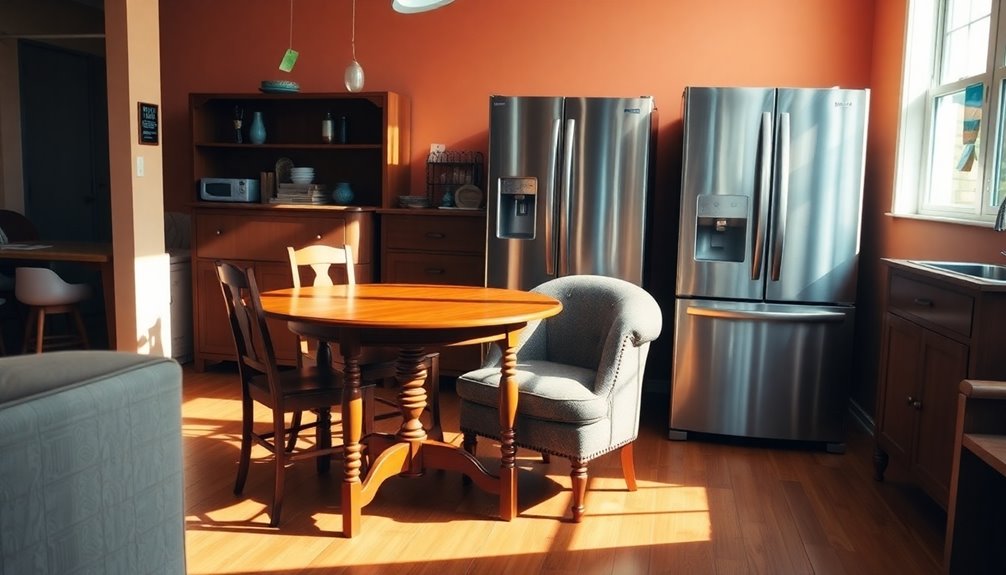
After you've sorted and prepared your furniture for donation, it's important to know what items are accepted by organizations like the Salvation Army. They accept a variety of appliances and household items that can make a difference for those in need.
When it comes to appliances, you can donate mixers, blenders, coffeemakers, griddles, and lamps. These items are often highly valued by families looking to equip their kitchens or brighten up their homes. Importantly, 82% of proceeds from donations support community programs and initiatives, showcasing the impact of your generosity.
Additionally, the Salvation Army welcomes household items like bakeware, curtains, blankets, sofa covers, and glasses or cups. These everyday essentials help create a comfortable living environment for those who receive them.
However, remember that not everything is accepted. For instance, building materials, entertainment centers, satellite dishes, firearms, and propane tanks are among the items they won't take. Before you make your donation, double-check the list of accepted items to ensure you're contributing items they can actually use. This way, you'll help streamline the donation process and ensure your items reach those who need them most. Your contribution could truly make a difference!
Tax Deductions and Receipts
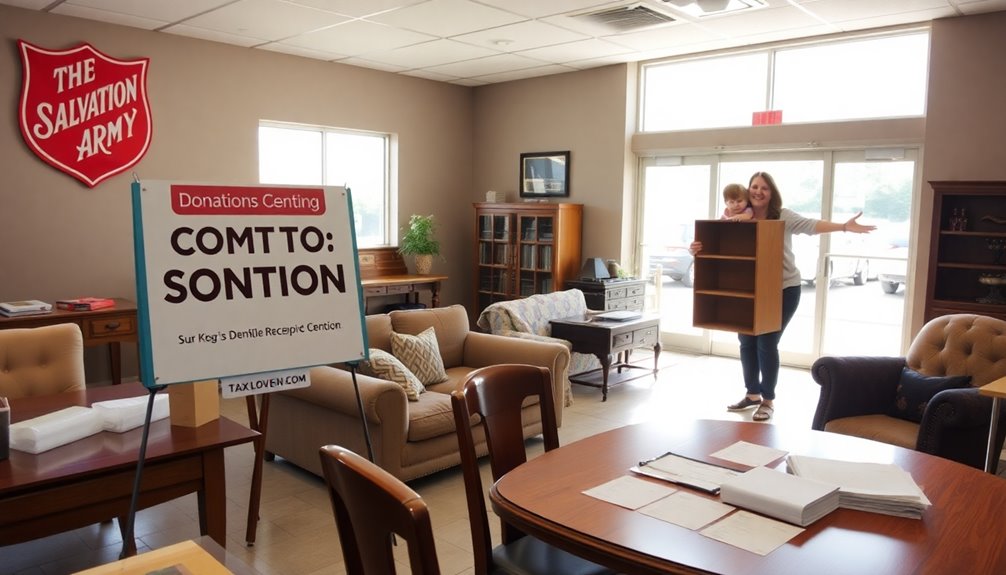
Many people don't realize that donating furniture can provide valuable tax deductions. When you give away furniture in good or used condition, you can claim its fair market value as a deduction on your taxes. Keep in mind that if your items are worth over $500 and in less than good used condition, you'll need a qualified appraisal to qualify for the deduction. Tax-exempt organizations like the Salvation Army can provide you with the necessary documentation for your donation, ensuring you can maximize your deductions.
To determine fair market value, consider prices at local thrift stores or use tools like "It's Deductible." Always document the value of your donations, as you'll need this information for tax purposes. If your total deductions exceed $500, remember to file Form 8283.
When you donate, you'll receive a receipt that's crucial for your records. You can get this at donation drop-off locations, or for online pickups, it'll be sent to you via email. This receipt should include the date, location, and value of your items, serving as a lasting tax record. If you happen to misplace it, you can request a replacement from Donor Services. By keeping track of these details, you can effectively reduce your taxable income.
Additional Donation Tips
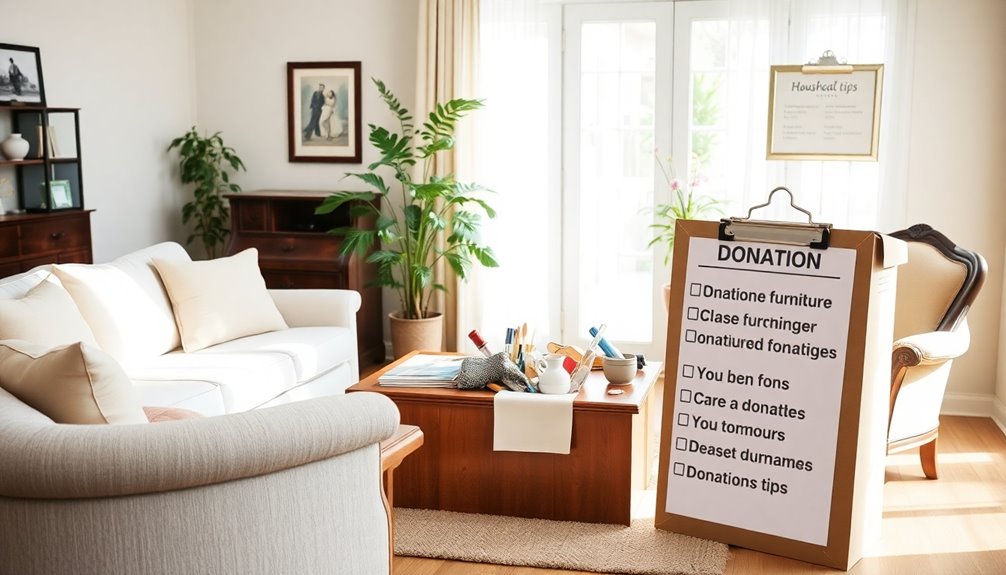
When donating furniture, it's essential to ensure your items are in the best possible condition and ready for their new home. Start by assessing the furniture's structural integrity; check for any significant stains, tears, or damage. Make sure it's free from bed bugs and harmful chemicals. If the item isn't usable, consider junk removal instead.
Before donating, clean the furniture thoroughly. Make minor repairs, like tightening loose screws or fixing wobbly legs, to enhance its usability. Protect large pieces during transport to prevent damage, and ensure all parts and accessories are included. Package and label items appropriately to avoid any breakage. Donating furniture helps individuals in need access affordable or free furniture, making your contribution even more meaningful.
Research local and national charities for specific donation guidelines. Check if pickup services are available in your area and schedule a pickup online or by calling your local office. Don't forget to confirm the donation center's operating hours before heading out.
Finally, organize your donations. Categorize items by type, use easy-to-carry bags or boxes, and ensure all pockets are empty. Clearly label and document your donations to help streamline the process. Following these tips will make your donation experience smoother and more efficient.
Frequently Asked Questions
Can I Donate Furniture From a Business or Organization?
Yes, you can donate furniture from a business or organization, but it's important to ensure the items meet certain criteria. Check that the furniture is in good, usable condition and free from major flaws. It's a good idea to clean and prepare the items before donation. Also, research local charities to confirm they accept business donations, and see if they offer pickup services for larger pieces.
Are There Restrictions on the Age of Donated Furniture?
When it comes to donating furniture, age isn't usually a direct restriction. However, the condition matters more. If your furniture shows significant wear, tears, or odors, it won't be accepted, regardless of its age. You'll want to ensure that it's in good, usable condition. Always check with the specific organization for any particular policies they might have, as regulations can vary by location. Keeping items clean and functional is key.
What if My Furniture Needs Minor Repairs?
If your furniture needs minor repairs, don't fret! You can easily tackle issues like tightening screws or fixing small scratches before donating. Just make sure it's still usable and safe. Clean the items thoroughly to remove any dust or stains. Once you've addressed these minor flaws, you'll be ready to proceed with the donation process. Remember, the better condition your furniture is in, the more likely it is to be accepted.
How Long Does the Pickup Process Take?
The pickup process typically takes about 7-14 days from when you schedule it. You'll need to call or use the website to arrange a time. Once you've set it up, just prepare your items and leave them in an accessible spot. When the crew arrives, they'll take your donations, and you'll receive a receipt via email afterward. If you need to change anything, contacting donor services is your best bet.
Can I Request a Specific Pickup Time?
You can't request a specific pickup time. The Salvation Army schedules pickups based on the availability of trucks and driver routes, so while you can choose a day, they won't guarantee an exact time. It's important to be flexible since they deal with high volume donations. If you can't be home, make sure to label your items clearly and leave them accessible for pickup.
Conclusion
Donating furniture to the Salvation Army is a straightforward way to give back to your community. By ensuring your items meet the eligibility criteria and following the donation steps, you can make a real difference. Don't forget to keep your receipt for tax deductions! With a little effort, you can declutter your space while helping those in need. So, gather your items and share the love—your old furniture can find a new home!
